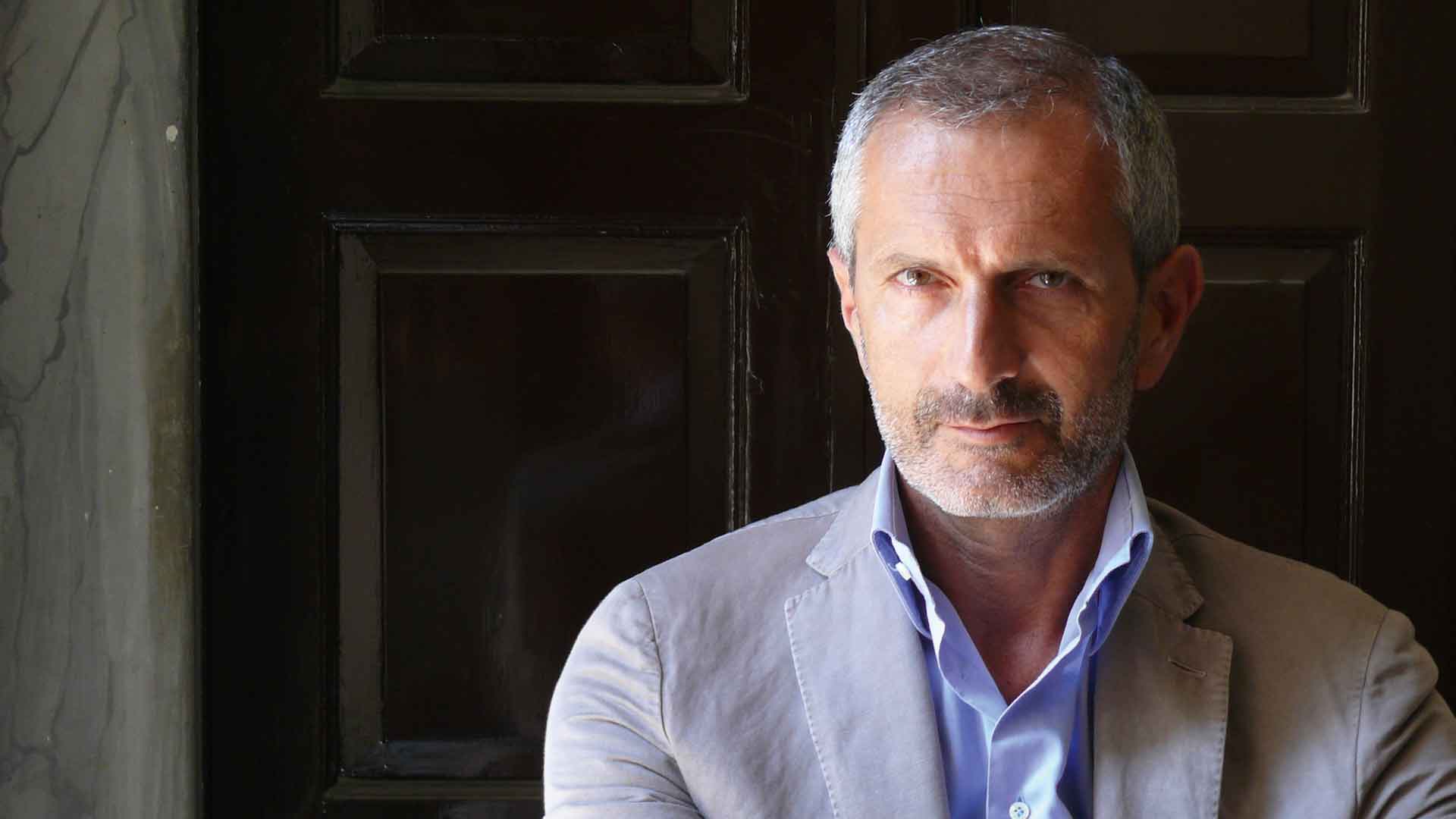You are viewing your 1 free article this month. Login to read more articles.
Molto bene: Italian market reaps post-pandemic gains despite flatlining
Fiction shines in 2024 with homegrown authors remaining dominant.
Guest of Honour Italy entered this Frankfurt Book Fair in fine fettle, with its market sparkling at home and abroad since the pandemic—probably its book trade’s best run of form since Italy was last the FBF GoH in 1988.
According to research from the Italian publishers’ trade body, Associazione Italiana Editori (AIE), its members generated combined domestic and export revenue of €3.44bn in 2023, making its industry the fourth biggest in Europe—trailing Germany, the UK and France—and in sixth place globally (the US and China head the pack). That €3.44bn was a slight (1.1%) gain on 2022 and continues the surge that Italy’s industry has enjoyed since the pandemic; it is a whopping £300m more than where the market was in 2019.
Italian home-market trade sales were €1.9bn in 2023; the AIE argues that figure makes books Italy’s “first cultural industry” and that “reader spending is higher than consumer spending on pay TV, free-to-air TV [via Italy’s licence fee], video games, music and cinema”.
One of the interesting things about the Italian home trade market is that it is still dominated by print to an astonishing degree. Last year, just 6% of that €1.9bn was generated by e-books and audiobooks, a share that has moved only incrementally in the past decade or so; five years ago the digital share was 5%.
An even more striking aspect of digital is how completely unmoved Italian consumers are by audiobooks, the big growth area in many territories across the globe: just €28,000 was spent in the country on audio subscriptions last year.
One of the interesting things about the Italian home trade market is that it is still dominated by print to an astonishing degree
Despite the very low take-up of digital reading (and listening), one aspect of books and technology has been on the up since the pandemic: e-tailing. When the pandemic hit, Italy’s book consumers, like most markets, shifted to online (Italy, you’ll recall, had strict lockdowns and was the first European country to impose them in 2020). For the bulk of the 2010s, that e-tailer share of physical book sales hovered between around two-fifths and a quarter of the market—in 2019 it was 26.7%—but in 2020 that ballooned to 43%. And e-tailers have largely held onto this circa-40% chunk ever since.
Like the anglophone world, Italy has a small group of conglomerate publishers who account for around half the home market. The country’s Big Four (Quattro Grandi)—Feltrinelli, Giunti, Mondadori and Gruppo editoriale Mauri Spagnol (GeMS)—earned 50.8% of Italy’s domestic value sales last year, according to the AIE, with indies and medium-sized players bagging the remaining 49.2%.
While AIE does its fully forensic home-and-abroad data annually, domestic print sales available through NielsenIQ-GfK thus far in 2024 suggest this year will largely ape 2023. Through the first 35 weeks of the year, NielsenIQ-GfK’s Italy panel recorded 63.2 million units for €915.2m being rung through the tills, flat against the same period last year in value terms, but a slight (-2%) drop in volume.
Fiction has been the driver, up 3% to €362.6m, the only one of the four major Nielsen categories to have growth. The six bestselling books in 2024 have been novels, as have 15 of the overall top 20.
The upper echelon of the Italian charts in general very much looks to la patria: of Italy’s top 20 bestsellers overall in 2024, 19 of them are from Italian authors. Yet the very summit is the exception: Swiss crime writer Joël Dicker’s Un animale selvaggio (A Wild Animal—it has yet to be published in English) has shifted just over 213,000 copies, a meaty 55,000 units better than the next bestselling title.
Like the anglophone world, Italy has a small group of conglomerate publishers who account for around half the home market
Second place is Gianrico Carofiglio’s L’orizzonte della notte, the former anti-Mafia public prosecutor and senator turned crime writer’s seventh in his Bari-set series starring lawyer Guido Guerrieri. Carofiglio has been on a run of late with sales booming, helped by last year’s popular “Il metodo Fenoglio”, the RAI TV show based on his 2016 novel, L’estate fredda (The Cold Summer), from his other series featuring carabinieri marshal Peter Fenoglio.
Two authors appear twice in the Italian Fiction top 20 Francesca Giannone and Stefania S. Giannone’s La portalettere was the monster début of 2023, becoming Italy’s top novel of the year and winning the Premio Bancarella, the prize awarded by Italian booksellers. La portalettere has sold over 137,000 copies this year and is still Italy’s third bestseller, with almost 410,000 units sold since launch. Giannone’s follow-up, Domani, domani, has been strong, too, selling almost 91,000 copies in just nine weeks.
Stefania S is the pseudonym of an anonymous romance author who got their start on Wattpad and has been taken to Italian BookTok’s bosom. Stefania’s second in the Love Me, Love Me series, 2024’s Amore senza fine, hits 10th in the Fiction chart, while 2023’s first volume, Cuori magnetici, is 12th.
Another pseudonymous author hits the Fiction top 10 in graphic novelist Zerocalcare’s Quando muori resta a me (Zerocalcare means “zero limescale” and Michele Rech took his nom de plume from a TV ad jingle for a descaler product). He has worked in the superhero world for Marvel but his own books deal with the personal and political, and his performance at the tills has been boosted by his animation deal with Netflix. His newest semi-autobiographical book centres on trying to connect with his father on a trip to the Dolomites
But the biggest star in graphic novels this year—and one who like Zerocalcare, bridges animation and print—has been Pera Toons, the YouTuber turned kids’ comics star. Toons (real name Alessandro Perugini) absolutely bosses the Children’s charts with seven of the top 10. The Children’s bestsellers are the most receptive to translated titles with 10 of the top 20 foreign authors, a mix of classics (Roald Dahl, Antoine de Saint-Exupéry), current big brands (J K Rowling, Jeff Kinney) and Disney licensed characters.
The Italian Non-Fiction charts are topped, poignantly, by the late Michela Murgia a—novelist, LGBTQ+ campaigner, playwright and radio personality who died last August of cancer aged just 51. Her two books in the Non-Fiction top 10 are a collection of her essays and a reflection of her life.
Data Sources: NielsenIQ-GfK, 35 weeks ending 31st August 2024 and Associazione Italiana Editori’s “Report on the State of Italian Publishing”
Italian rights: Sales boom in the 21st century
It would be fair to say that until the turn of this century—and despite being a large books market—Italy was not exactly a translation export powerhouse, outside a few border-crossing authors such as Umberto Eco, Italo Calvino and Andrea Camilleri. AIE data shows that in 2001, the country’s publishers concluded 1,800 international rights deals, compared to 5,400 books bought in from other languages to be translated to Italian.
A concerted effort since the millennium has completely changed this narrative, thanks to efforts within the trade and external help from boosts in translation funding by various departments in the culture ministry, and organisations such as SEPS (Segretariato Europeo per le Pubblicazioni Scientifiche), a non-profit with a mission of supporting Italian non-fiction books “of high cultural value” being published abroad.
Rights agreements have risen year-on-year since and in 2023 the Italian trade sewed up a record 7,838 translation deals, a 335% increase over 2001. Mind you, Italy is still a net importer of translations, with 9,328 foreign language titles bought in last year, but that wide gulf from the start of the century has narrowed considerably.
The past two decades have been blessed by arguably its greatest period of international appeal for Italian authors led by the Elena Ferrante phenomenon but aided by Roberto Saviano, Carlo Rovelli and, most recently, Francesca Giannone, whose 2023 début La portalettere and its 2024 follow-up Domani, domani have been sold into 37 countries.

















